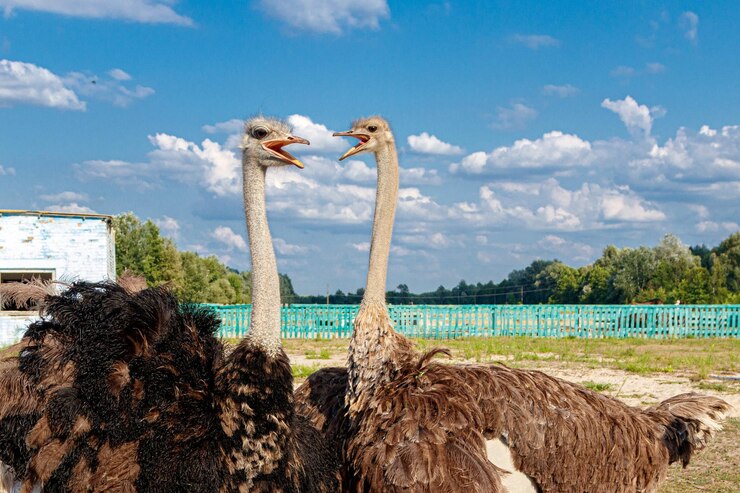Ostrich farming is indeed a significant industry in South Africa, with the country being one of the leading producers of ostrich products in the world. Ostriches are the largest flightless birds and are known for their distinctive appearance, with long necks, powerful legs, and large, attentive eyes. Their meat, leather, feathers, and eggs are all valuable resources that make ostrich farming economically viable.
South Africa’s climate and vast open spaces make it an ideal location for ostrich farming. The industry began in the late 19th century when ostrich feathers were highly sought after for fashionable hats and accessories. Although the demand for feathers declined over time, the ostrich farming industry adapted by diversifying its products.
Today, ostrich farming in South Africa primarily focuses on three main areas: meat production, leather production, and tourism. Ostrich meat is lean, low in cholesterol, and rich in protein, making it a popular choice for health-conscious consumers. Ostrich leather is highly valued for its durability and unique texture, often used in luxury goods such as bags, wallets, and shoes. The tourism aspect of ostrich farming involves offering visitors the opportunity to interact with these magnificent birds, learn about their behavior, and even ride them.
Ostrich farming requires specialized facilities and management practices to ensure the birds’ welfare and optimize production. Farms need spacious enclosures that allow ostriches to move around and exercise freely. Ostriches are herbivores and require a balanced diet of grains, grass, and supplements to meet their nutritional needs. Farming operations may include breeding pairs, incubation of eggs, and raising chicks until they reach maturity. Ostriches reach sexual maturity at around 2 to 3 years of age and have a relatively long lifespan of up to 40 to 50 years.
South African ostrich farms often implement sustainable farming practices to minimize their environmental impact. They may use efficient water management systems, renewable energy sources, and responsible waste management techniques.
The ostrich farming industry in South Africa has faced challenges over the years, including disease outbreaks and fluctuations in global demand. However, it has demonstrated resilience and continues to play a significant role in the country’s agricultural and economic sectors.
It’s worth noting that animal welfare concerns have been raised regarding certain practices within the ostrich farming industry, such as the use of cramped conditions or inhumane handling methods. Efforts are being made to address these issues and improve animal welfare standards through regulations and industry initiatives.
Ostrich farming in South Africa is a thriving industry that has evolved to meet changing market demands. It provides valuable resources such as meat, leather, feathers, and eggs while also contributing to the country’s tourism sector. However, it is important to ensure that ostrich farming practices prioritize the welfare of these magnificent birds.
Join 'Farmers Mag' WhatsApp Channel
Get the latest Farming news and tips delivered straight to your WhatsApp
CLICK HERE TO JOIN






